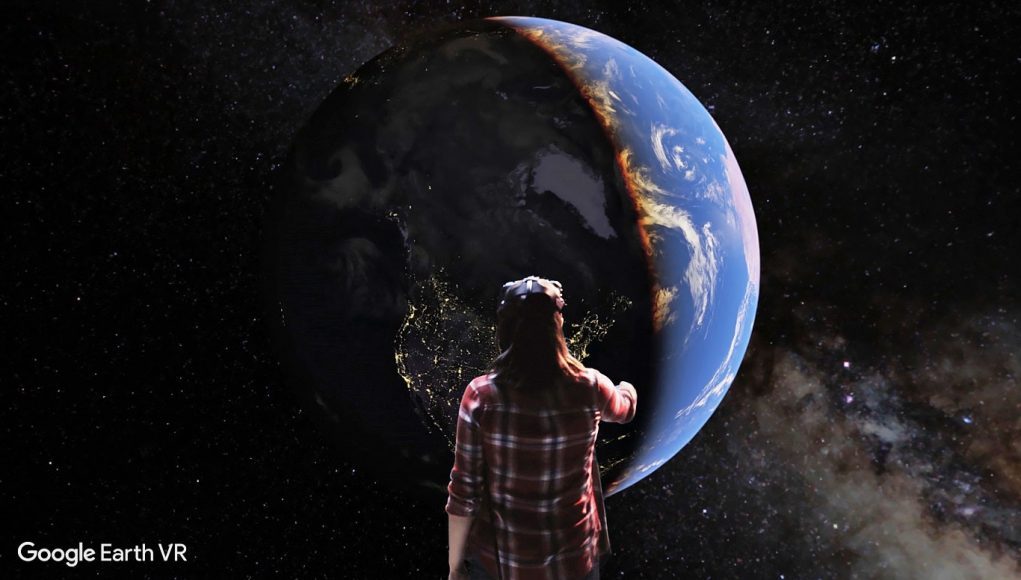Whether or not you’re in the narrow band of ‘solar eclipse totality’ that’s making its way across the continental United States on Monday, August 21st, Google Earth VR has seen a recent update that will let you experience the rare event from the comfort of your own HTC Vive or Oculus Rift.
Released in an August 12th update, Google has added a new menu function that lets you activate Monday’s total solar eclipse, which can be seen as it passed through 14 US states: Georgia, Idaho, Illinois, Iowa, Kansas, Kentucky, Missouri, Montana, Nebraska, North Carolina, Oregon, South Carolina, Tennessee, and Wyoming.

You can navigate to the solar eclipse mode through the destinations menu, which plops you in a default area in rural Oregon. Sitting under an already blotted-out Sun, you can use the same point-and-drag tool that lets you rotate the world—making it seem like you’re dragging the fiery, life-giving ball itself—so you can control the actual moment when the Moon blocks out its light. Because not everyone is getting an eye-full of the total eclipse, this is a great opportunity to see it in an impressively accurate simulation of the world, albeit without the risk of burning out your retinas.
Also, not everyone is going to be exactly in the narrow band that stalks across the US, so if you want to get a quick preview of your local area, you need but blast off from the globe and navigate to your hometown for a look at whatever partial eclipse you may have. From a much greater, space-bound vantage point, you can also get a chance to see the ominous dark spot meander across North America in a way otherwise impractical outside of VR.
There’s no word how long the solar eclipse function will be available, but we suspect it may be wiped away in a short time after the actual solar eclipse.
‘Google Earth VR’ on Oculus Store
NASA’s Safety Guidelines for Solar Eclipse Viewing:
- Always inspect your solar filter before use; if scratched or damaged, discard it. Read and follow any instructions printed on or packaged with the filter.
- Always supervise children using solar filters.
- Stand still and cover your eyes with your eclipse glasses or solar viewer before looking up at the bright sun. After looking at the sun, turn away and remove your filter — do not remove it while looking at the sun.
- Do not look at the uneclipsed or partially eclipsed sun through an unfiltered camera, telescope, binoculars, or other optical device.
- Similarly, do not look at the sun through a camera, a telescope, binoculars, or any other optical device while using your eclipse glasses or hand-held solar viewer — the concentrated solar rays will damage the filter and enter your eye(s), causing serious injury.
- Seek expert advice from an astronomer before using a solar filter with a camera, a telescope, binoculars, or any other optical device. Note that solar filters must be attached to the front of any telescope, binoculars, camera lens, or other optics.
- If you are within the path of totality, remove your solar filter only when the moon completely covers the sun’s bright face and it suddenly gets quite dark. Experience totality, then, as soon as the bright sun begins to reappear, replace your solar viewer to look at the remaining partial phases.
- Outside the path of totality, you must always use a safe solar filter to view the sun directly.
- If you normally wear eyeglasses, keep them on. Put your eclipse glasses on over them, or hold your handheld viewer in front of them.







